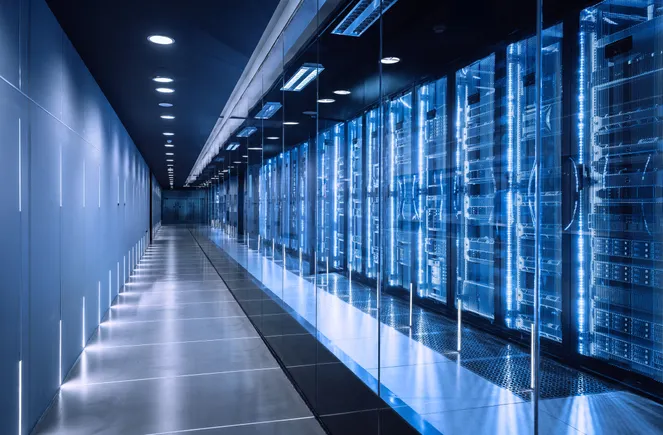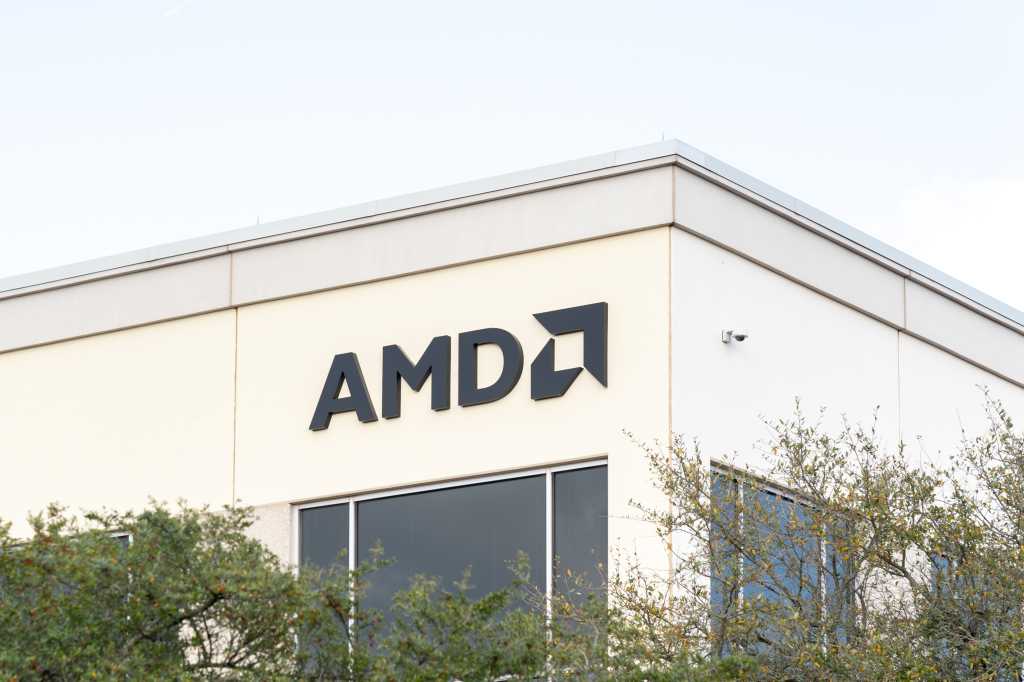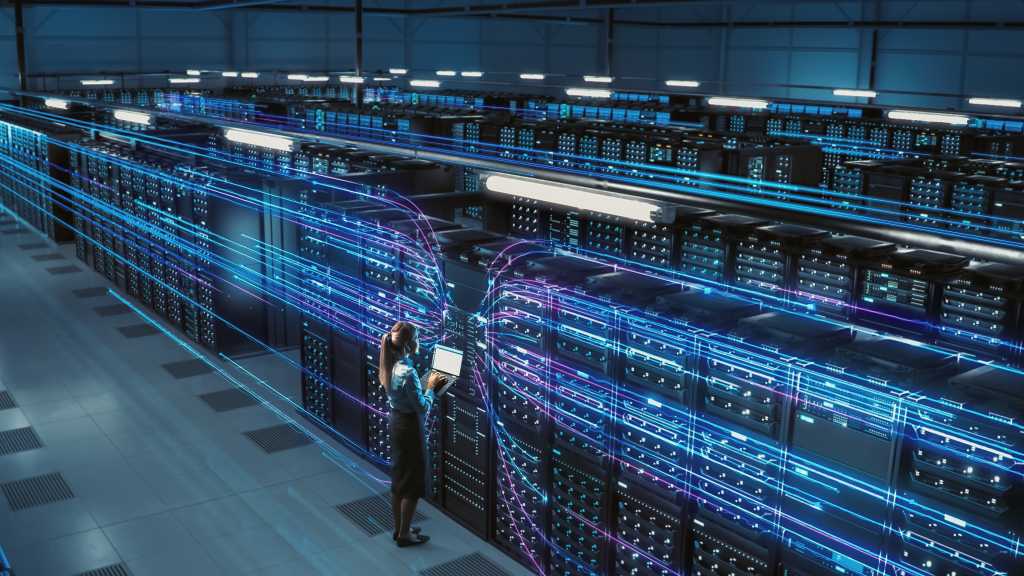
Flow batteries are not, strictly speaking, a new technology. Yet even with improvements to decrease the cost, the flow batteries have never really caught on — until, perhaps, recently.
Energy storage developer XL Batteries said in May that it had penned a contract to pilot a 333-kW organic flow battery at a data center owned by Wyoming-based Prometheus Hyperscale. And other energy storage companies, focused on other types of batteries, have made similar announcements in recent months. Eos Energy Enterprises, which produces zinc-based batteries, has entered talks with an unnamed, large-scale developer of data centers.
While data center operators remain interested in renewable energy — a strategy that will likely require some form of energy storage — that wasn’t the primary reason why Prometheus decided to green-light XL Batteries’ flow battery pilot, according to XL Batteries CEO Tom Sisto. Rather, the company was looking for a non-flammable technology that could react quickly to large shifts in power demand, and XL’s organic flow batteries fit the bill.
Other industry leaders agree with Sisto: as a growing number of data centers look to acquire massive power supplies on short timelines, it could be opening a door for mature, but as-yet under-utilized energy storage technologies.
Most projects remain relatively small-scale pilots as data center operators and developers test new solutions, but XL Batteries already has ample buyers waiting in the wings should the Prometheus project — which is slated for completion in 2027 — perform as expected. Prometheus itself has already contracted to buy up to two 12.5 MW purchases, one each in 2028 and 2029, pending the pilot.
“Once this is shown to be working, we’re probably already sold out,” Sisto said.
An appetite for innovation
Data centers have multiple, unique power needs that could lead them to new and underused forms of energy storage, according to Sam Allen, mission critical director for technical innovation in the global facilities group at Burns & McDonnell, an engineering and construction firm that has taken on several data center projects. While traditional, cloud-type data centers have more steady, predictable loads, AI-focused data centers can be subject to sudden, often significant load fluctuations that lead to more complicated power needs, Allen said.
Data centers, like other large infrastructure projects, have also run into permitting and interconnection barriers, which has prompted their operators to look for independent sources of power that are flexible and reliable in the face of inconsistent power needs, said Tisha Scroggin-Wicker, decarbonization director in the power group at Burns & McDonnell.
Lithium-ion batteries remain the most widely discussed solution in conversations between Burns & McDonnell and their data center clients, Scroggin-Wicker said. But alternatives like flow batteries are getting more attention, because they can support a high number of charge-discharge cycles with minimal performance degradation over time. This makes them particularly well-suited to applications where long-term durability and cycling capability are critical, and to sites that experience frequent and rapid load fluctuations, she said.
Nickel-zinc batteries are also attracting attention from data centers on account of their high power density, improved safety profile and environmental benefits. And supercapacitors could prove interesting given their ability to provide a very large amount of power, but for a short period of time, Scroggin-Wicker said.
“Ultimately, the industry is focused on solutions that balance speed to market, operational reliability and sustainability,” Allen said. “There’s a clear appetite for innovation and for moving beyond any single technology when it helps future-proof their infrastructure and support broader energy goals.”
Use-case based decisions
While there is interest among data centers in behind-the-meter energy storage that could connect to the grid and participate in virtual power plant programs and the like, for the most part the data centers being built haven’t gone this direction, Scroggin-Wicker said. Most of Burns & McDonnell’s clients that have built onsite energy storage have opted to eschew the grid entirely, pairing storage with dedicated generation in a bid to bring the data center online faster than is possible if a utility is involved, she said.
Burns & McDonnell has also seen data centers express an interest in buying and operating existing energy storage projects, regardless of the storage technology involved. Existing lithium-ion projects, flow batteries, compressed air energy storage and other forms of long-duration energy storage have all drawn attention. These technologies could give data center operators a greater ability to manage higher power densities, integrate more renewable energy and provide reliable, flexible power supply — all on a comparatively short timetable relative to connecting to the grid, Scroggin-Wicker said.
Yet it’s not yet clear whether any specific energy storage technology will win over the majority of data centers.
Jason Abiecunas, executive vice president of business development at FlexGen, a software provider that supports energy storage systems, said that data centers have expressed interest in a wide range of storage technologies. That’s not surprising given the data centers’ unique operational needs, but that does require a company like FlexGen to adapt to a potentially more technology-agnostic energy storage landscape, he said.
But when it comes time to deploy an energy storage system, Abiecunas said, only a handful of new technologies have won out.
“What’s becoming more clear is that battery chemistry decisions are increasingly use-case driven,” he said. “For example, when energy storage is deployed to displace traditional generators or extend backup capabilities, we’re seeing a growing interest in long-duration chemistries.”
Sisto doubts that data centers have any real need for what the utility sector would consider long-duration energy storage. Like Abiecunas, the interest he has seen is primarily driven by specific use-cases — and the cost of owning and operating an energy storage project decreases when you cycle that energy storage system more frequently. Storage technologies with a 36-48 hour range are, in his opinion, most likely to win out with data center operators; seasonal or ultra-long energy storage technologies will not.
The challenge at the moment, Sisto said, is that many of the options currently of interest to data centers remain relatively unproven in the real world — even if, like flow batteries, they rely on technologies that have existed at least in the lab for decades. And most data center operators do not want to be the first to deploy an unproven technology at scale. That has the majority of prospective customers hanging back, waiting to see how the current raft of pilot-scale projects pan out before they sign anything binding — which could prompt a rush on the relatively limited manufacturing capacity that exists for some of these technologies the minute one of them proves solid, according to Sisto.
“That’s the natural tension,” Sisto said. “Everyone would love to wait and see, but at that point you have missed the boat.”






















